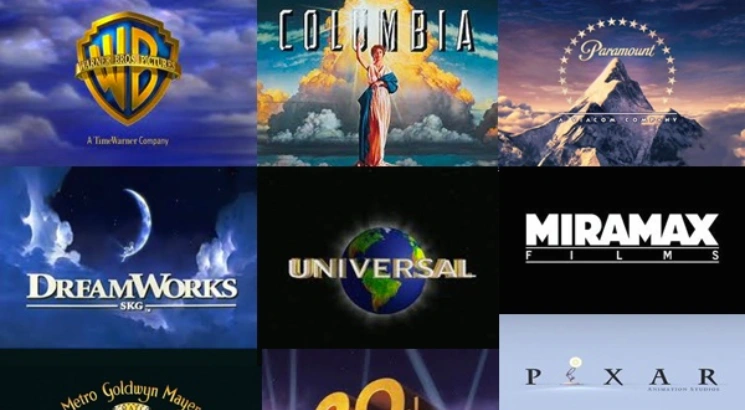Guide to Independent Film Distribution: Success in Indie Cinema

Welcome to our comprehensive guide to achieving success in independent film distribution. As independent film marketing experts, we understand the challenges and opportunities that come with producing and distributing independent films. With this guide, we aim to provide valuable insights and strategies to navigate the complex landscape of indie cinema and market your films effectively.
From choosing the right distribution platform to working with independent film distribution companies, we cover a range of topics crucial to the success of your film. We will also address the importance of effective marketing, the significance of film festivals, revenue optimization, navigating distribution challenges, and leveraging digital media.
- Independent film distribution requires careful planning and effective marketing strategies.
- Collaborating with reputable independent film distribution companies can significantly enhance your film's reach.
- Choosing the appropriate distribution platform is crucial for maximizing your revenue and your film's impact.
- Film festivals play a vital role in showcasing independent films and attracting the attention of distributors.
- Understanding the nuances of distribution agreements is essential to protect your film's rights and ensure fair compensation.
What is Independent Film Distribution?
At its core, independent film distribution is bringing a film to its intended audience. This often involves partnering with a film distribution company that provides essential services to ensure the film's success. Film distribution companies handle various tasks, including marketing, promotion, and securing distribution platforms.
While major film studios often have in-house distribution teams, independent filmmakers typically rely on external distribution companies to showcase their work. These companies specialize in independent film distribution and have the necessary expertise to navigate the complex landscape of the film industry.
The Role of Film Distribution Companies
Partnering with a reputable film distribution company can significantly increase the chances of success for independent filmmakers. These companies have extensive networks and a deep understanding of the industry. This allows them to identify the best distribution platforms for a particular film and implement marketing strategies to generate buzz and attract audiences.
Film distribution companies offer services that cover the entire distribution process, from obtaining distribution rights to securing theatrical and digital releases. They also handle the logistics of distribution, such as arranging screenings, creating trailers, and providing promotional materials.
Film Distribution Platforms and Services
Film distribution companies typically use a combination of traditional and digital distribution platforms to showcase independent films. Traditional platforms include theatrical releases and distribution on physical media such as DVDs. Digital platforms, on the other hand, include online streaming platforms such as Netflix and Amazon Prime, as well as video-on-demand (VOD) services.
The choice of distribution platform depends on various factors, including the film's genre, budget, and target audience. For example, a low-budget indie film may be better suited for VOD platforms, given their lower distribution costs, while a highly anticipated art-house film may warrant a theatrical release to generate buzz and critical acclaim.
Ultimately, selecting the right film distribution platform and services is crucial to the success of independent filmmakers. By working with experienced film distribution companies, filmmakers can ensure that their work reaches the right audience and maximizes its potential for success.
Choosing the Right Film Distribution Platform
Choosing the right film distribution platform is crucial for your film's success. With so many options available, it's essential to select one that aligns with your film's target audience and distribution goals.
In this section, we will explore various film distribution platforms, both traditional and digital, and discuss effective strategies to maximize your film's reach and impact.
Traditional Film Distribution Platforms
Traditional film distribution platforms include theatrical releases, DVDs, and television broadcasts. While these platforms have been the industry standard for decades, they also come with significant expenses and hurdles to secure distribution.
However, if done correctly, these platforms can still provide excellent exposure and revenue for your film.
| Platform | Pros | Cons |
|---|---|---|
| Theatrical Release | • Prestige and exposure among audiences • Potential for critical acclaim and awards | • Expensive and requires significant marketing budgets • Difficult to secure distribution in major theaters • Small profit margins for indie films |
| DVD/Blu-Ray Release | • Can be sold directly to consumers and retailers • Potential for supplemental features and bonus content • Long shelf life and residual income | • Declining market due to streaming services • Costly production and distribution expenses • Less exposure compared to theatrical releases |
| Television Broadcasts | • Much broader reach than theatrical releases • Opportunity for repeat broadcasts and residuals | • High production costs and rigorous broadcast standards • Fierce competition for network and cable space • Less prestige and critical acclaim compared to theatrical releases |
Digital Film Distribution Platforms
Digital film distribution platforms have revolutionized the industry and opened up new opportunities for independent filmmakers. These platforms are typically more cost-effective, allow for global reach, and enable filmmakers to connect directly to their audience through online streaming platforms and video-on-demand services.
| Platform | Pros | Cons |
|---|---|---|
| Online Streaming Platforms | • Massive audience reach and visibility • Instant and convenient access to films • Global distribution with no physical production or distribution costs | • Fierce competition and saturation in the market • Revenue sharing can be low for indie films • Difficult to stand out in a crowded market |
| Video-On-demand Services | • Direct distribution to viewers without middlemen • Opportunity for flexible pricing and rental options • Immediate access to data and analytics for marketing and promotion | • Revenue sharing can be low for indie films • Difficult to stand out in a crowded market • Less prestige and industry recognition compared to theatrical releases |
While each platform has its pros and cons, it's crucial to assess which distribution method best aligns with your unique goals and resources. Depending on your film's budget and niche, a combination of traditional and digital platforms may be the most effective way to reach your target audience and maximize revenue potential.
Once you have selected your distribution platforms, it's essential to develop effective film distribution strategies to ensure your film's success. In the next section, we will explore practical strategies to leverage the selected platforms and maximize your film's impact.
Working with Independent Film Distribution Companies
Collaborating with independent film distribution companies can be a game-changer for indie filmmakers, as they have the expertise and connections to expand the reach of your film. However, it is essential to work with reputable distributors who align with your vision and goals.
Finding Independent Film Distribution Companies
One way to find potential independent film distribution companies is to research and attend industry events such as film festivals and markets. These events offer opportunities to network and connect with distributors, as well as gain insights into the latest industry trends.
You can also reach out to other indie filmmakers in your network for recommendations and referrals. It's important to do your due diligence and thoroughly research any potential distributors to ensure they have a reliable track record and a good reputation in the industry.
Establishing a Relationship with Indie Film Distributors
Once you have identified potential independent film distribution companies, it's important to establish a relationship built on open communication and transparency. Discuss your expectations, goals, and timeline for the distribution process and ensure the distributor is on the same page.
It's also essential to have a clear understanding of the distribution agreement, including the terms of revenue sharing, distribution expenses, and marketing plans. A comprehensive contract can help protect your rights and ensure a fair deal.
The Benefits of Working with Indie Film Distributors
| Benefits | Explanation |
|---|---|
| Expanded Reach | Independent film distribution companies have established relationships with a variety of distribution platforms, including theaters, streaming services, and television networks. They can help expand your film's reach and ensure it gets in front of your target audience. |
| Expertise in Marketing and Promotion | Indie film distributors have experience in effectively marketing and promoting independent films. They can help develop a marketing strategy that fits your budget and target audience. |
| Industry Connections | Established independent film distribution companies have connections with key players in the industry, such as film festival organizers and industry professionals. They can leverage these connections to help promote and distribute your film. |
| Credibility | Partnering with a reputable independent film distributor can lend credibility to your film and give it a better chance of success in the competitive indie cinema landscape. |
Overall, working with independent film distribution companies can be an effective way to navigate the distribution process and give your film the best chance of success. By building a strong relationship with a reputable distributor and having a clear understanding of the distribution agreement, you can ensure a smooth and fruitful distribution journey.
The Role of Film Festivals in Independent Film Distribution

Film festivals play a significant role in showcasing independent films and attracting the attention of top independent film distributors. While there are numerous festivals worldwide, not all are relevant or suitable for your film. It's essential to research and understand which festivals align with your film's genre, theme, and target audience.
Some of the top indie film festivals in the United States include Sundance, South by Southwest (SXSW), Tribeca, and the Telluride Film Festival.
| Film Festival | Location | Month |
|---|---|---|
| Sundance | Park City, Utah | January |
| South by Southwest (SXSW) | Austin, Texas | March |
| Tribeca | New York City, New York | June (as of 2023) |
| Telluride Film Festival | Telluride, Colorado | September |
Attending festivals offers opportunities to network, connect with industry professionals, and showcase your film to a broader audience. Some festivals, such as Sundance and SXSW, offer marketplaces for filmmakers to sell distribution rights to major film companies. Additionally, if your film receives recognition and awards at festivals, it can increase its visibility and credibility, fostering interest from independent film distribution companies and potential audiences.
Therefore, it is crucial to develop an effective festival strategy that not only maximizes your film's chances of getting screened but also utilizes these opportunities to further your film's distribution potential.
Marketing Strategies for Independent Films

Independent film marketing is a crucial element in ensuring the success of a low-budget film. Effective marketing can create buzz, generate interest, and attract the attention of your target audience. Here are some practical marketing strategies to help promote and market your film:
1. Know Your Audience
To create effective marketing campaigns, it is essential to understand your target audience. Conduct research to identify your audience's demographics, interests, and media consumption habits. This knowledge will help you tailor your marketing messages to resonate with your intended audience.
Check out The Audience Project for more insights and action steps.
2. Build a Strong Online Presence
In today's digital age, having a strong online presence is essential. Create a website, social media accounts, and other digital assets to promote your film. Use these platforms to share updates, trailers, and behind-the-scenes content to engage with your audience.
| Social Media Platforms | Benefits |
|---|---|
| Wide audience reach | |
| Real-time updates | |
| Visual content and influencer marketing | |
| YouTube | Trailer promotion and video content |
3. Leverage Influencer Marketing
Partnering with influencers in your film's niche can increase your reach and credibility. Identify influencers with audiences that align with your film's target audience and collaborate with them to create promotional content such as reviews and social media posts.
4. Attend Film Festivals and Events
As we previously touched, participating in film festivals and events will allow you to showcase your film and network with industry professionals and potential distributors. Film festivals provide excellent opportunities for marketing and can generate significant buzz for your film.
5. Create Promotional Materials
Create eye-catching promotional materials such as posters, flyers, and merchandise to promote your film offline. Distribute these materials at events, screenings, and other relevant venues to generate interest and awareness.
6. Utilize Email Marketing
Email marketing is an effective and cost-efficient way to reach your target audience. Build an email list using sign-up forms on your website or at events. Send regular newsletters and updates to keep your audience engaged and informed.
With these strategies, you can effectively market your independent film on a low budget and create the buzz and interest needed for a successful distribution journey.
The Importance of Film Distribution Agreements

As independent film distribution involves collaboration with various parties, it is essential to sign film distribution agreements to protect your film's rights and ensure fair compensation. These agreements cover the terms and conditions of the distribution arrangement, including the territories covered, the duration of the distribution, and the revenue-sharing structure.
At the heart of any distribution agreement are the rights granted and the compensation earned. Therefore, it is necessary to ensure that distribution agreements outline the specific rights granted to the distributor regarding time, territory, and platform. For instance, if the distribution agreement covers a particular region, the distributor cannot distribute the film outside that area without prior consent.
In addition, the compensation structure should be outlined in detail, including the revenue-sharing arrangement and the expenses deducted from the revenue. Most agreements include a recoupment clause that allows the distributor to recoup expenses such as marketing and distribution costs before sharing revenue with the filmmaker.
It is recommended to work with reputable, experienced independent film distribution companies that are transparent and offer fair contract terms. Additionally, engaging the services of an attorney familiar with entertainment law to review the agreement can help filmmakers negotiate favorable conditions and avoid any potential legal issues.
In summary, film distribution agreements are critical in protecting the rights of filmmakers and ensuring that they are fairly compensated for their work. Working with reputable independent film distribution companies and seeking legal advice can help filmmakers negotiate favorable terms and ultimately optimize revenue potential.
Maximizing Revenue from Independent Film Distribution
Generating revenue from independent film distribution can be a complex process, but by leveraging the proper strategies, you can optimize your potential for revenue. It's crucial to understand the potential of various film distribution platforms and to connect with top independent film distributors to maximize your chances of success.
Monetization Models
One key strategy for maximizing revenue is to explore various monetization models. Depending on your film and distribution platforms, you may be able to generate revenue through methods such as:
- Flat Fee: Distributors pay a one-time fee for the right to distribute your film.
- Revenue Share: You and the distributor share a percentage of the revenue generated by your film.
- Subscription: Your film is included in a subscription-based service, and you receive a portion of the subscription revenue.
Revenue-Sharing Structures
When negotiating revenue-sharing terms, it's important to consider the different structures available to you. For example:
| Structure | Description |
|---|---|
| Gross Profit | You and the distributor split profits after all expenses have been paid. |
| Gross Revenue | You and the distributor split revenue before expenses have been deducted. |
| Net Profit | You and the distributor split profits after all expenses have been paid, and you receive a cut of the distributor's revenue as well. |
Distribution Platforms
Choosing the right distribution platform is also crucial for maximizing revenue. Some popular options for independent film distribution include:
- Theatrical Release: While this option may be costly, it offers the potential for significant revenue if your film is successful in theaters.
- VOD: Video-on-demand platforms such as Amazon Prime Video and Netflix can provide a significant audience and revenue potential.
- Pay-per-view: This model allows viewers to pay a fee to rent your film, providing a revenue stream for each rental.
- Streaming: Streaming services such as Hulu and YouTube offer revenue through ad-supported or subscription-based models.
By leveraging different distribution platforms and revenue models, you can maximize your revenue potential and achieve success in independent film distribution.
Navigating the Challenges of Independent Film Distribution

While independent film distribution can be a rewarding process, it also comes with its share of challenges. As filmmakers, we understand the importance of overcoming these obstacles to ensure a smoother distribution journey. Some common challenges faced by indie film distribution include:
- Limited budget for marketing and distribution
- Difficulty in finding reputable distributors
- Competition from major studio releases
- Securing desirable distribution platforms
- Lack of control over distribution and marketing strategies
However, with careful planning and execution, it is possible to overcome these obstacles and achieve success in indie film distribution. Here are some strategies to navigate these common challenges:
Invest in Effective Film Distribution Services
Investing in reliable film distribution services can help you navigate the challenges of independent film distribution. From securing desirable distribution platforms to effective marketing strategies, film distribution services can provide end-to-end support to ensure the success of your film.
Collaborate with Reputable Indie Film Distributors
Finding reputable indie film distributors can be a challenge, but it is crucial to maximizing your film's visibility and impact. Do your research and seek out distributors that have a track record of success in distributing films similar to yours. Establish a fruitful partnership with them to ensure your film reaches its target audience.
Adopt Innovative Marketing Strategies
Marketing poses a major challenge for independent films with limited budgets. However, adopting innovative, low-cost marketing strategies can help create buzz for your film and generate interest among your target audience. From social media to grassroots marketing, there are several strategies you can leverage to market your indie film on a budget.
Stay on Top of Industry Trends
Staying abreast of the latest indie film distribution trends can help you stay ahead of the curve and navigate the challenges effectively. Keep an eye on emerging distribution platforms, changing audience preferences, and innovative marketing strategies to ensure your film stays relevant and impactful.
By adopting these strategies, you can overcome the challenges of indie film distribution and ensure success for your film.
Leveraging Digital Media in Independent Film Distribution

In today's digital age, leveraging film distribution platforms has become crucial for achieving success in independent film distribution.
The Power of Social Media
Social media platforms have become an essential tool for marketing and promoting independent films. With billions of active users across various platforms, social media provides an opportunity to reach a vast audience, create buzz, and engage with fans and followers.
By establishing a strong social media presence, you can build a community around your film and keep your audience updated throughout the distribution process. Sharing behind-the-scenes photos, trailers, and updates about festival screenings can help generate excitement and anticipation for your film's release.
Online Streaming Platforms
The rise of online streaming platforms has provided independent filmmakers with an alternative to traditional distribution models. Streaming platforms such as Netflix, Amazon Prime Video, and Hulu have millions of subscribers worldwide, providing a massive potential audience for independent films.
Working with these platforms can be challenging, but with the right strategies and partnerships with film distribution services, you can maximize your film's reach and revenue potential. It is important to research the platforms' requirements, understand the revenue-sharing models, and negotiate favorable terms in distribution agreements.
Other Digital Avenues
In addition to social media and streaming platforms, there are other digital avenues to leverage for independent film distribution. For example, email marketing can be an effective way to reach your target audience directly. Building an email list can help you keep your audience updated about your film's progress and encourage them to attend screenings, purchase tickets, and recommend the film to others.
Crowdfunding platforms such as Kickstarter and Indiegogo can also provide independent filmmakers with access to funding and a built-in audience. By creating compelling campaigns and offering incentives for contributions, you can generate buzz around your film and secure the resources needed for distribution.
Conclusion
As independent film distribution experts, we understand the challenges and intricacies that come with getting your film to its target audience. However, armed with the right insights and strategies, you can optimize your chances of success in the competitive world of indie cinema.


